As gasoline prices drop and commuters feel less pain at the pump, do they drive more and take Metro less? The short answer is maybe, but not much.
In recent months, gasoline prices in the Washington region have dropped by over a dollar per gallon, to a near-record low of around $2.50 per gallon. Here’s how gas prices have changed in the last 11 years (unadjusted for inflation):
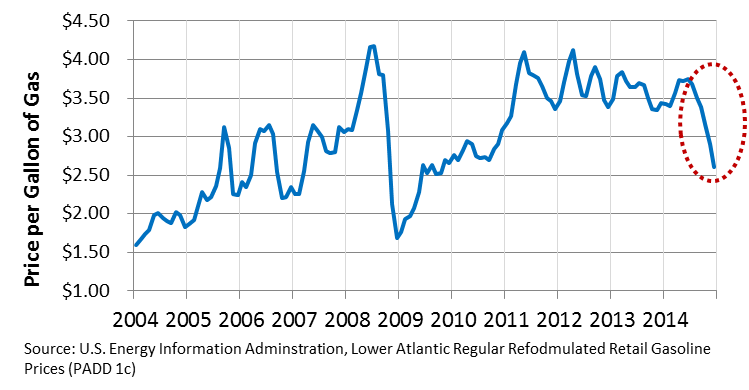
Below is a simple scatter plot comparing those prices to bus and rail ridership to gasoline prices, by month, for the last 11 years. It shows that gas prices have a very small, nearly negligible, effect on Metro ridership. The relationship is essentially zero for Metrobus, and barely detectable on Metrorail as a whole, as pictured below. The link is best with off-peak rail ridership (R2 = 0.24) compared to peak ridership (R2 = 0.09), suggesting that off-peak Metrorail riders are most sensitive to gas prices. (Not pictured.) Read more…
Metro is re-imagining the region’s bus network to improve travel times, enhance connectivity, and deliver service cost-effectively.
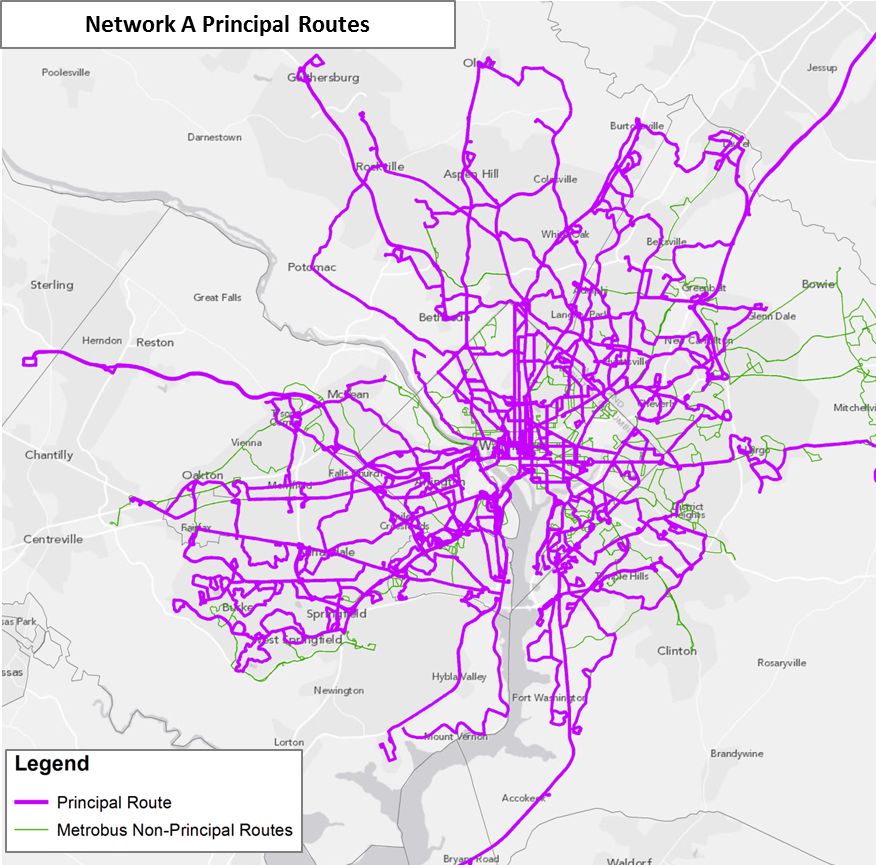
Over the past year, as part of the Metrobus Network Effectiveness Study, Metro began exploring potential future Metrobus restructuring scenarios based on the region’s growth trajectory over the next two decades. The scenarios also reflect the market segments where Metrobus can be more effective — places like the urban core, activity centers, and major arterial streets. Planners took the Metrobus network in the region’s Constrained Long-Range Plan (CLRP) for 2030 as the basis of comparison and formulated several network restructuring alternatives. This post will introduce the alternative networks, while future posts will present the performance of the networks, as well as a completely new proposed network built from the ground up. The flow chart below illustrates the network alternatives, followed by a brief explanation about each alternative.
Read more…
The majority of late night bus boardings are in DC, focused along the 14th/16th Streets NW corridor.
As we’ve mentioned before, Metro is conducting a study examining late night bus service in the region. An initial step was to assess where the late night boardings are happening in order to determine which might be the best locations to focus in-person survey efforts. Below is a map showing the locations of the top 100 locations where riders board Metrobus from 11pm-4am each night. Rather than reflecting the total ridership of a stop, the magnitude of the circles on the map reflect that location’s share of overall late night bus ridership.
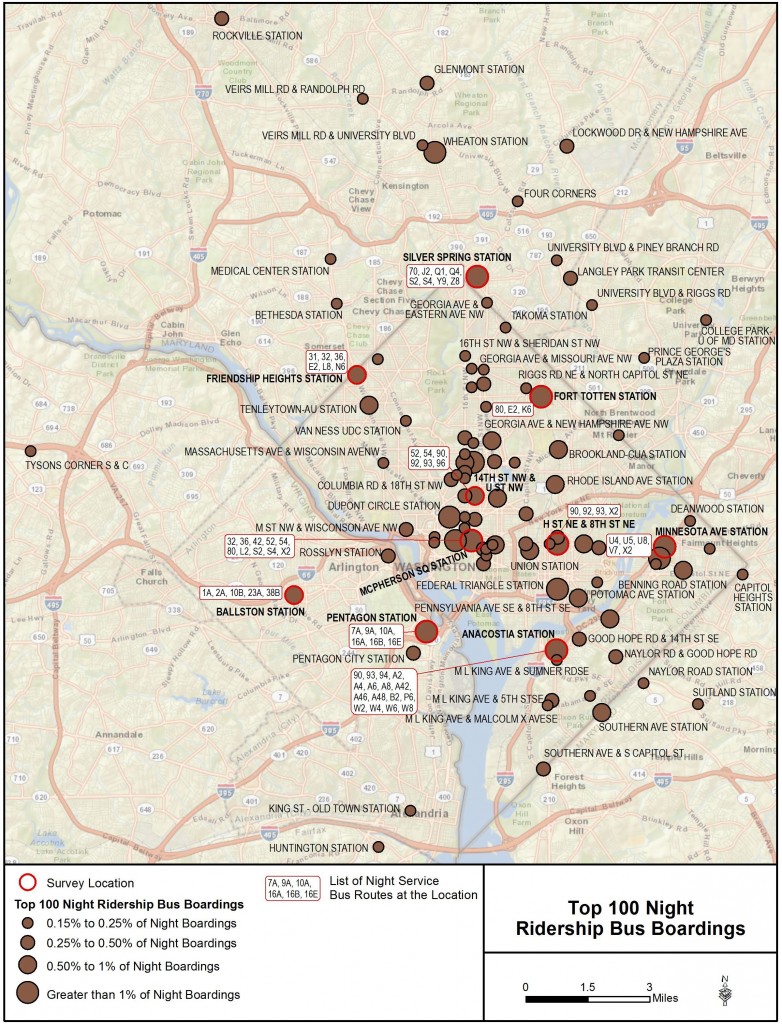
Top 100 Late Night Metrobus Boarding Locations*
Some notes on the map:
- Almost all of the major bus boarding locations (those with more than 1% of the total) are at Metrorail Stations, even though Metrorail stops operating just one hour into the late night period on weeknights.
- Not surprisingly, most of the boardings are in DC, many of which are concentrated in the 16th/14th St NW corridor from downtown to Columbia Heights.
- The data only reflect Metrobus boardings, so if boardings on local operators such as DC Circulator are added, the total numbers of late night bus boardings would be higher than what is shown here.
- Of course this only tells us where the riders are boarding, not necessarily where they’re going; we are investigating that as part of the study.
What do you see that stands out?
* Note that Southern Avenue Metro Station replaced 14th & U Street as an in-person rider survey location.
Service improvements are coming along Pennsylvania Avenue and Wisconsin Avenue affecting Routes 32 and 36. These changes are designed to provide more reliable and frequent bus service to the majority of riders.
What are the changes?
Route 32 will no longer provide crosstown service between Southern Avenue and Friendship Heights. Buses will now operate between Southern Avenue and Foggy Bottom. Crosstown service to Friendship Heights will be replaced by the NEW Route 30S. Route 36 will no longer provide crosstown service between Naylor Road and Friendship Heights. Buses will now operate between Naylor Road and Foggy Bottom. Crosstown service to Friendship Heights will be replaced by the NEW Route 30N. NEW Route 33 will operate between Friendship Heights and Archives, replacing routes 32 and 36 service on Wisconsin Avenue. Read more…
Despite having two million fewer people, our region used to have 60 miles of bus lanes. It’s time to revive them.
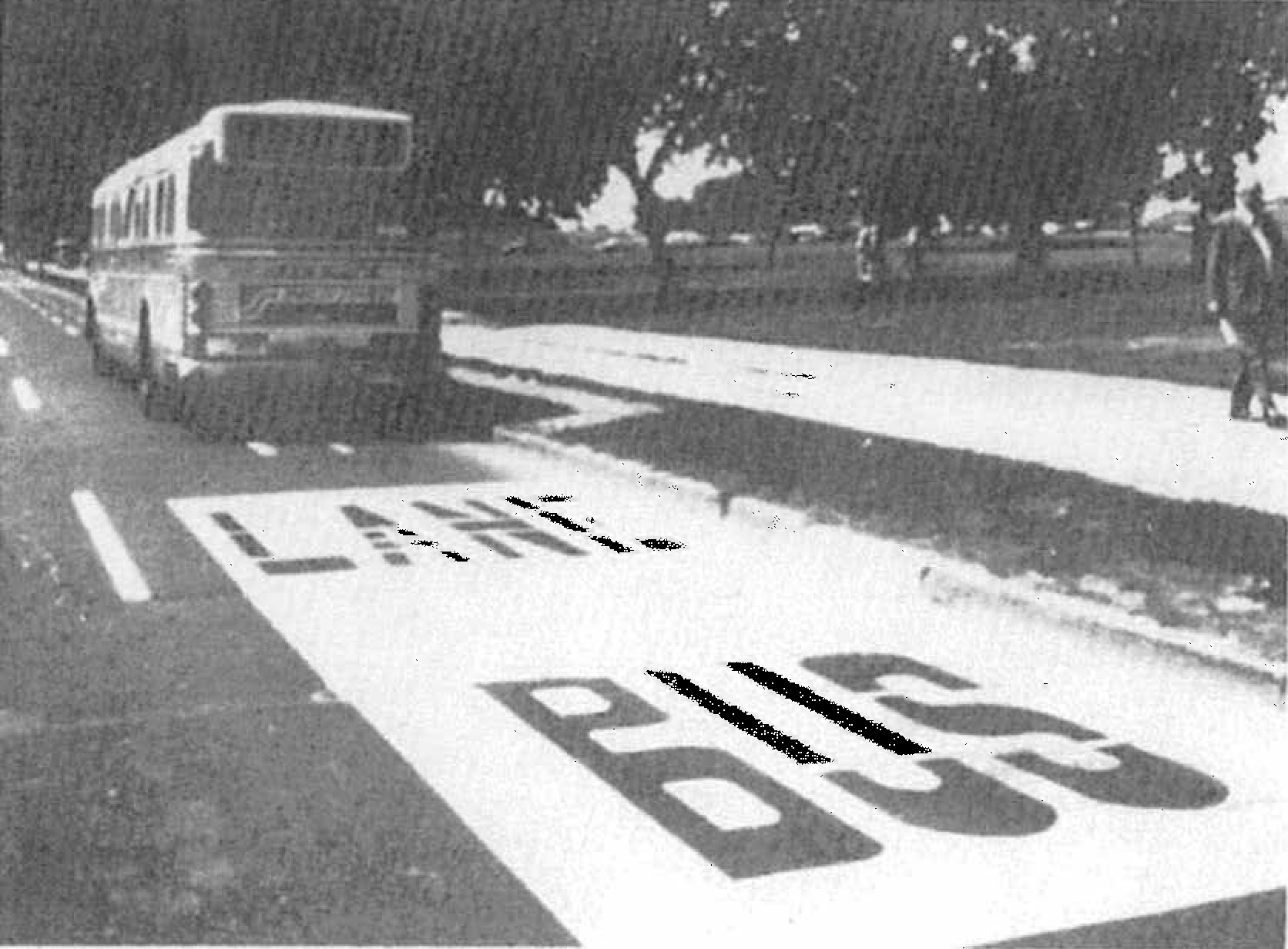
Bus Lane on 14th Street next to the National Mall in the early 1970s
Did We Really Have That Many Bus Lanes?
Yes. In the 1960s and 70s before Metrorail was built, Washington and its surrounding inner suburbs relied heavily on its bus system to get around, with very frequent service on a number of major streets. According to our records (linked at the bottom of this post), the first bus-only lane was installed in 1962 on 16th Street NW in DC, generally between H Street NW and Florida Avenue NW [DDOT Fact Sheet, p. 6]. This was followed by dozens of miles of rush-hour and full-time installations, as shown in the map and table below. Streets in red indicate bus lanes that were implemented as of 1976, while streets in black and blue represent bus lanes that were planned but, to our knowledge, never put in place.
Read more…
“If I’m a Blue Line rider in Virginia, what are my bus options once the Silver Line opens?”
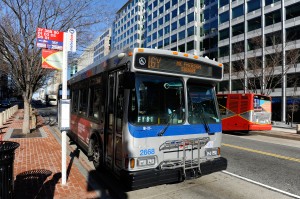
The 16Y to McPherson Sq.
We get asked this question quite a bit, and even more so now that the opening of the Silver Line is rapidly approaching. As we have written about extensively on PlanItMetro, the start of service on the Silver Line will mean a reduction in the frequency of rush hour Blue Line trains. Average headways will increase from 8.5 minutes to 12 minutes. For most riders, once they arrive at a Blue Line platform their quickest ride will still be via train (even with an additional few minute wait), but there are numerous options for riders looking to switch from rail to bus or new riders looking to commute via bus.
Here are some of your best bus options if you are a Blue Line rider going to, or coming from:
Downtown DC
- 7Y: Southern Towers to downtown DC. Beginning August 24, the 7Y will be rerouted to pass within walking distance of these Blue Line stations:
- Pentagon
- Arlington Cemetery
- Pentagon City (2 blocks)
- Crystal City (2 blocks)
- Farragut West
- McPherson Square Read more…
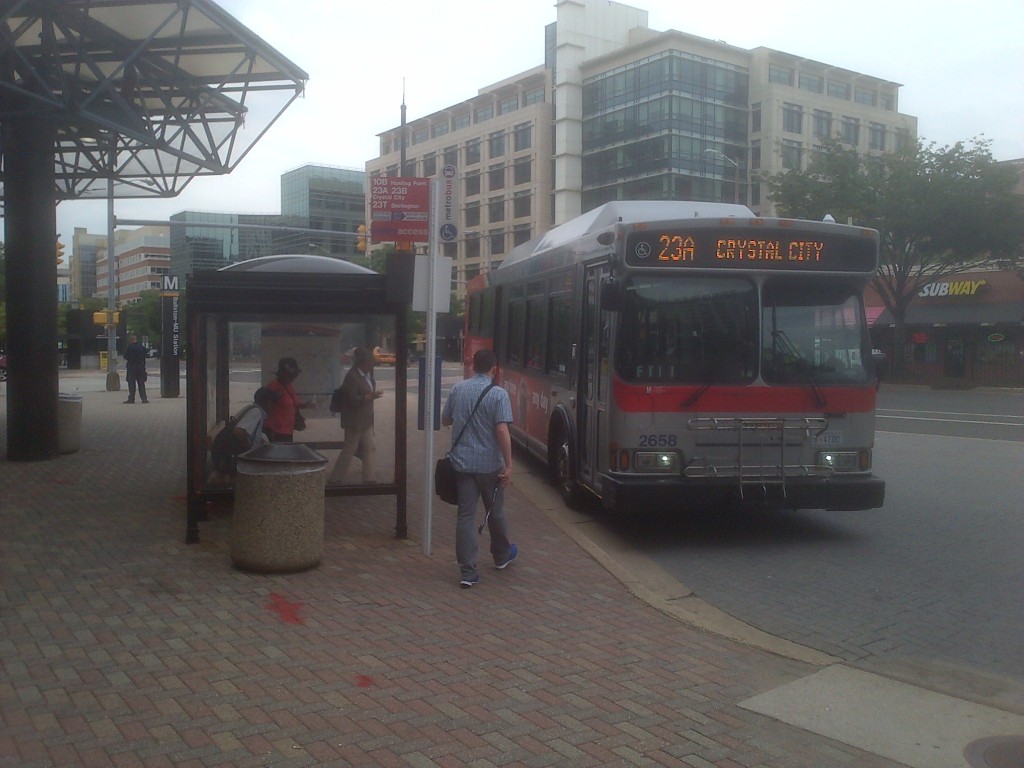
Customers boarding the 23A at Ballston
The distance between stops is of key concern to Metro and its customers. More closely spaced stops provide customers with more convenient access, as they are likely to experience a shorter walk to the nearest bus stop. However, closely-spaced stops are also likely to result in a longer ride for customers because of the number of times the bus stops — to decelerate, come to a complete stop and then accelerate and re-merge into traffic — is increased. This also can lead to increased fuel and maintenance costs.
Having fewer stops along a bus route benefits passengers not only by reducing the time it takes for them to make their trip, but by making the service more reliable and predictable.
Read more…
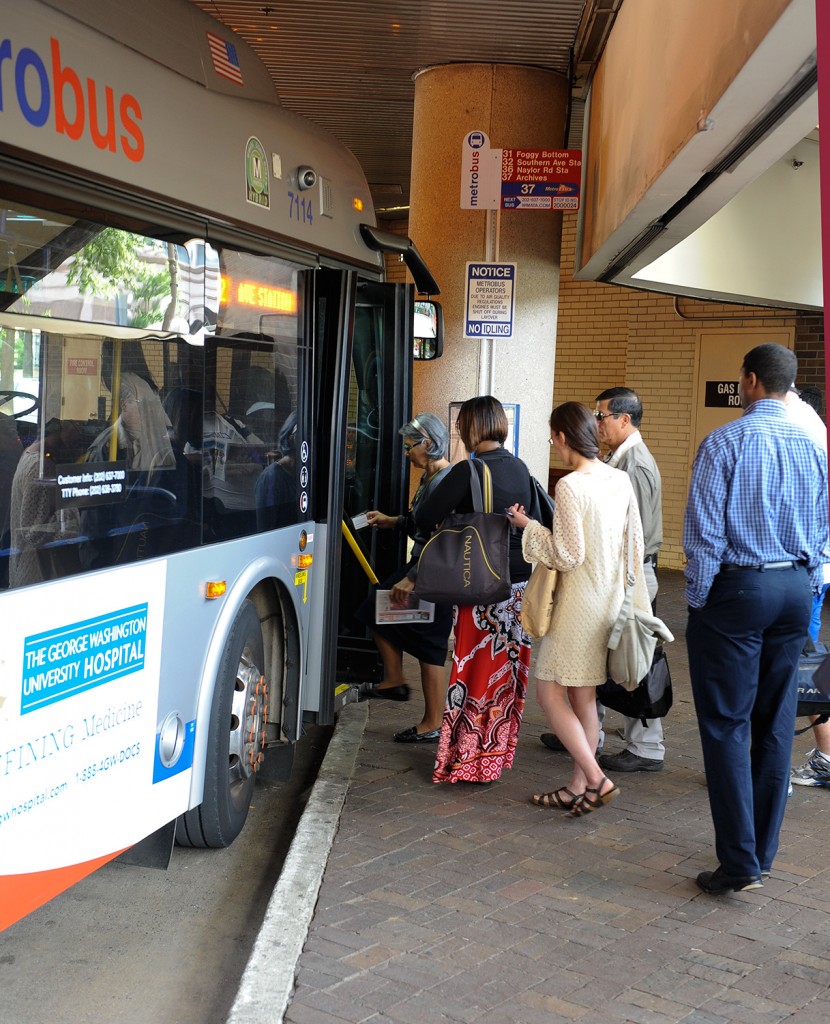
Boarding the 30s Line at Friendship Heights
The distance between stops is of key concern to Metro and its customers. More closely spaced stops provide customers with more convenient access, as they are likely to experience a shorter walk to the nearest bus stop. However, closely-spaced stops are also likely to result in a longer ride for customers because of the number of times the bus stops — to decelerate, come to a complete stop and then accelerate and re-merge into traffic — is increased. This can lead to degraded service quality for bus passengers and increased maintenance, and operating costs for Metro.
Having fewer stops along a bus route can benefit passengers not only by reducing the time it takes for them to make their trip, but also by making the service more reliable and predictable. When stops are analyzed, several factors will cause them to be taken out of consideration for removal. These reasons include stops in front of a school, house of worship, community center, senior housing, park, transfer point, or other popular amenities. These bus stops will not be removed irrespective of usage.
Read more…
The region either already has or is planning for a variety of different modes. How do they compare?  The Silver Line will soon open as a Metrorail line. Later this year, a streetcar will be operating on H Street, NE with others planned for Columbia Pike in Arlington and the District. Arlington and Alexandria are jointly building a bus rapid transit (BRT) line between Crystal City and Potomac Yard. Once funding is finalized, Maryland will build the Purple Line and light rail transit (LRT) will connect New Carrollton and Bethesda. This is all in addition to the region’s existing commuter rail, commuter bus, Metrorail, Metrobus, and MetroExtra services. The region is not only expanding transit services, but it also expanding the types of transit modes that will operate. At long last, instead of talking about Portland (streetcar), Jersey City (light rail), or Cleveland (bus rapid transit), we’ll be able to point directly to services and infrastructure in our backyard or take a trip and experience the pros and cons of these modes for ourselves.
The Silver Line will soon open as a Metrorail line. Later this year, a streetcar will be operating on H Street, NE with others planned for Columbia Pike in Arlington and the District. Arlington and Alexandria are jointly building a bus rapid transit (BRT) line between Crystal City and Potomac Yard. Once funding is finalized, Maryland will build the Purple Line and light rail transit (LRT) will connect New Carrollton and Bethesda. This is all in addition to the region’s existing commuter rail, commuter bus, Metrorail, Metrobus, and MetroExtra services. The region is not only expanding transit services, but it also expanding the types of transit modes that will operate. At long last, instead of talking about Portland (streetcar), Jersey City (light rail), or Cleveland (bus rapid transit), we’ll be able to point directly to services and infrastructure in our backyard or take a trip and experience the pros and cons of these modes for ourselves.
So how do the different modes compare? What kind of purposes does each serve? There are many external factors and trade-offs that influence how agencies and jurisdictions select which mode to implement. As we see from the ongoing debates in jurisdictions across the region between LRT and BRT or streetcar and enhanced bus, there is not always one perfect choice. However, an array of transit and land use measures can provide context to the conversation. As part of ConnectGreaterWashington: The 2040 Regional Transit System Plan, we developed the below table to compare commuter rail, commuter bus, heavy rail, light rail, streetcar, bus rapid transit, and enhanced bus across land use intensity (households and employment), vehicle capacity, stop spacing, trip length, and capital and operating costs.
What do you think? Does this information better inform the rail vs bus debate? What other information would provide more clarity on what modes work where?

Comparison of High-Capacity Transit Modes
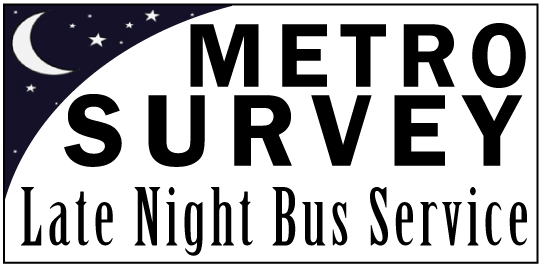
Metro is conducting rider surveys in support of a new study examining late night bus service, generally defined as operating between 11pm and 4am, with a focus on Metrobus service generally inside the Beltway and during the time period after Metrorail closes (after midnight during the week and 3am on weekends). The study will examine the performance of existing late night Metrobus service, connections among bus routes and between late-night activity centers (see map below), and the potential for 24-hour bus service, and for branding late-night bus service. The study will also make recommendations for near-term service improvements. Riders of many of the most heavily used Metrobus routes may have noticed surveyors at major bus stops as in-person surveys were conducted from approximately 11pm to 4am over the past week. Read more…












Recent Comments